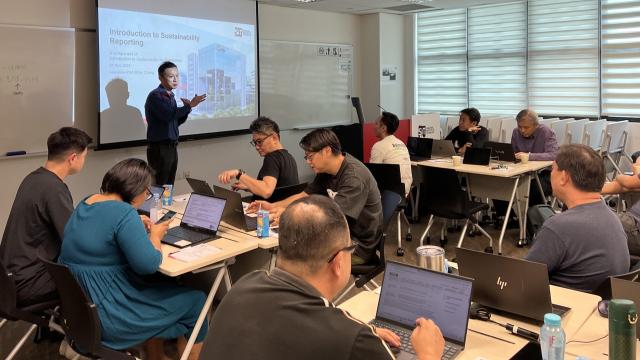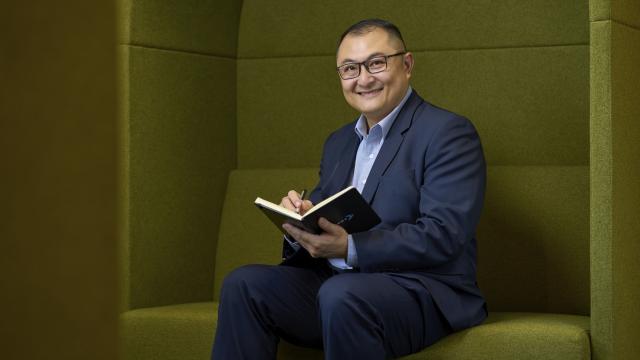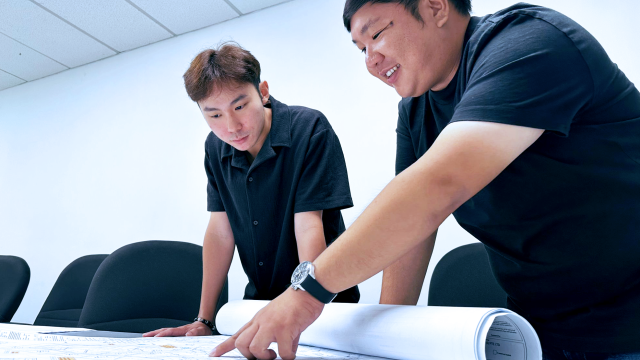In support of Singapore’s built environment transformation, the Singapore Institute of Technology (SIT) is molding a generation of civil engineers through applied learning.
As Singapore forges beyond its bicentennial, the construction sector is in pressing need for enhanced civil engineering capabilities to support mega-scale national infrastructure projects; as well as address challenges including climate change, globalisation and digital disruption.
Championing an applied learning pedagogy, SIT strives to nurture a strong core of civil engineers who are thinking tinkerers, lifelong learners and catalysts for transformation.
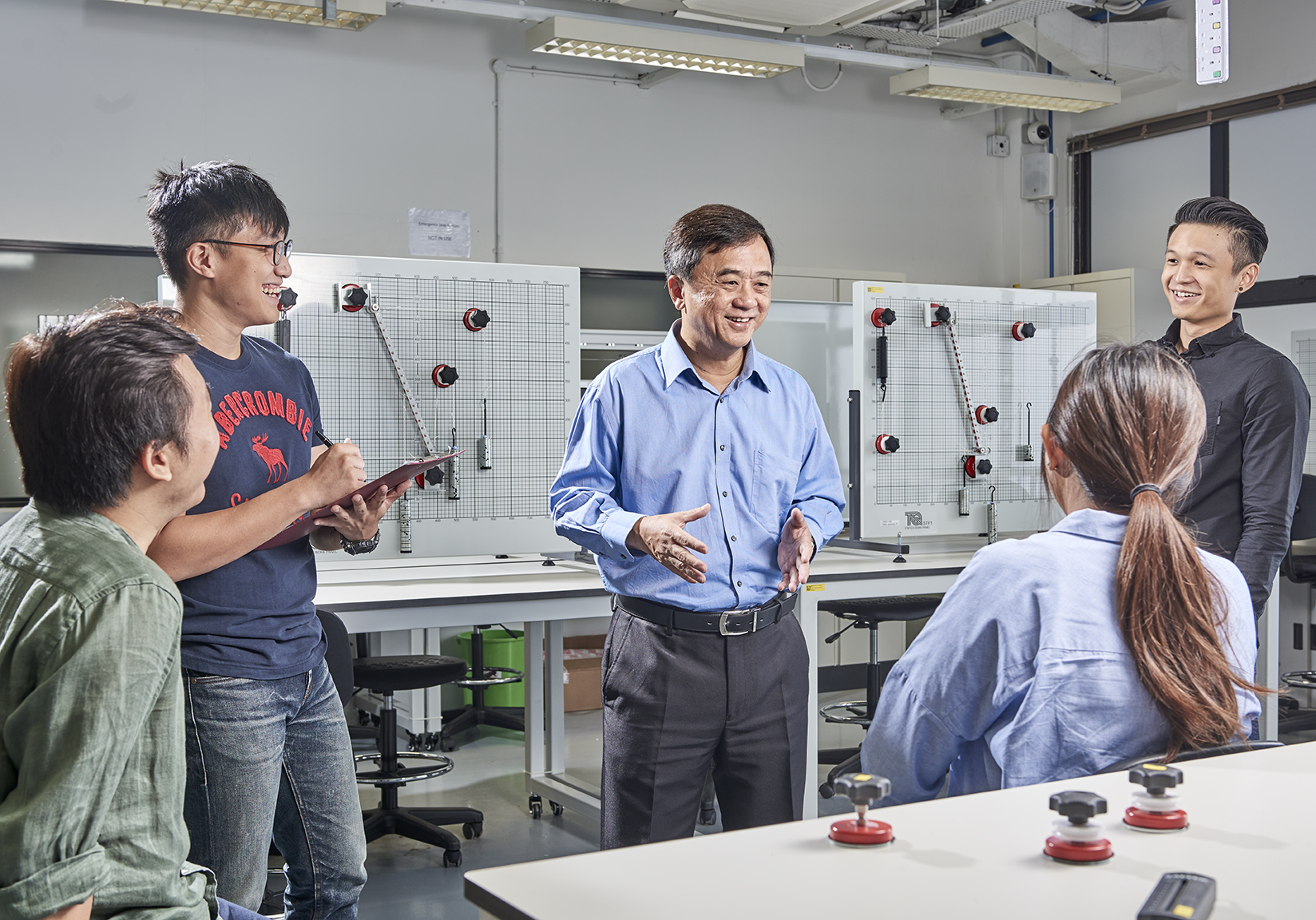
SIT’s Civil Engineering programme aims to develop problem-solving and critical thinking skills in students.
SIT-UofG Bachelor of Civil Engineering degree
At SIT, students of its Civil Engineering degree programme do not just learn facts, they develop problem-solving and critical thinking skills that can be applied to real-life situations in the industry and the community.
Established in 2017, the degree is jointly offered by SIT and University of Glasgow (UofG) to contribute to rising demands for civil engineers in the local building and construction industry.
The programme covers major civil engineering segments including structures, geotechnics, civil engineering materials, hydraulics and water resources, environment and sustainability, transportation and traffic, as well as construction technology.
Students who go on to enroll for post-graduate MEngTech programme can choose to specialise in structures and geotechnics and, in the future, other areas such as transport infrastructure.
Integrated Work Study Programme
Encapsulating SIT’s commitment in integrating learning, industry and community in every student’s learning journey, the programme will put students through an eight-month Integrated Work Study Programme (IWSP).
In September 2019, a pioneer cohort of 50 Civil Engineering students embarked on IWSP and were attached to various segments of the construction industry. This extended attachment will give them abundant opportunities to apply knowledge and skills acquired in the classroom to real industry settings.
SIT will also make available a cadre of Professional Officers with extensive industry experience to act as mentors for project work and career development for these students.
This pioneer cohort is expected to graduate and join the civil engineering workforce in 2020.
“SIT’s applied learning framework fosters the development of in-depth civil engineering knowledge, construction industry readiness and transferable skills in our graduate engineers. Their training to not just ’know that’ but also ‘know how’ has equipped them to address multi-disciplinary challenges across the construction sector,” said Assistant Professor Kum Yung Juan, Deputy Programme Director, Civil Engineering at SIT.
Beyond the eight-month IWSP, SIT also encourages its students to engage their IWSP hosts on capstone projects. The goal is for these students to identify challenges and work on developing solutions through analysis and experimentation with the support of SIT’s academic staff – and further broaden their industry exposure through the process.
Building on the success of the Bachelor programme, SIT has also launched the SkillsFuture Work-Study Degree Programme. This has made it possible for students who are in-employment within the built environment sector to attend the same classes as regular students at SIT’s campus once a week.
i-Labs Partnerships
Another key applied learning initiative of SIT is i-Labs – curriculum-driven teaching labs set up jointly by SIT and reputable industry players. Located either within the university or the premises of industry partners, i-Labs seek to promote student-industry collaboration on genuine industry issues.
Thus far, SIT has set up three i-Labs collaborations, with Samwoh Corporation, Kiso-Jiban Consultants and Setsco Services – who are leading players in the areas of pavement material technology, geotechnical investigation and quality testing, and environmental monitoring respectively.
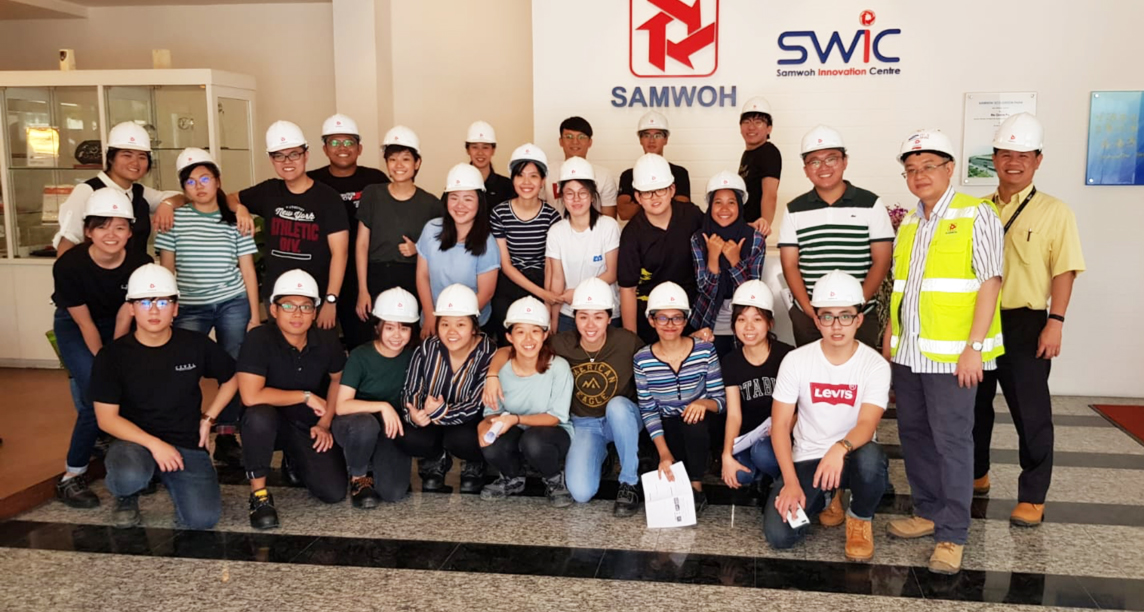
Students’ visit to the i-Lab at Samwoh.
i-Labs partnerships have proven to be win-win for students and industry partners. For students, it provides a unique channel for them to gain practical experience to solve real industry problems. Besides deepening their skillsets and competencies, this early industrial exposure also prepares students for employment in various sectors.
For industry partners, apart from opening up access to a talent pipeline, i-Labs also allow them to draw upon SIT’s expertise, equipment and other resources to develop innovative solutions.
A prime example illustrating i-Labs as a fine form of applied learning is the development of a lightweight concrete material for use in precast concrete construction. By working with industry players, students have learnt how to prepare concrete materials and perform concrete quality control tests; and gained hands-on experience in the concrete production cycle.
SIT hopes to add more i-Lab partners to expand the experience bank of its students.
"We are happy to support and collaborate with SIT. We are confident that by taking advantage of the real working environment and tapping on the state-of-the-art R&D and construction facilities that Samwoh provides, SIT students can be better prepared and equipped for the construction industry when they graduate,” said Dr Kelvin Lee, Senior Technical Manager, Samwoh Innovation Centre Pte Ltd.
Just as Singapore has built its past with ingenious contributions from civil engineers, SIT’s civil engineering graduates, with their applied learning training, will build a sustainable, liveable city for future generations.
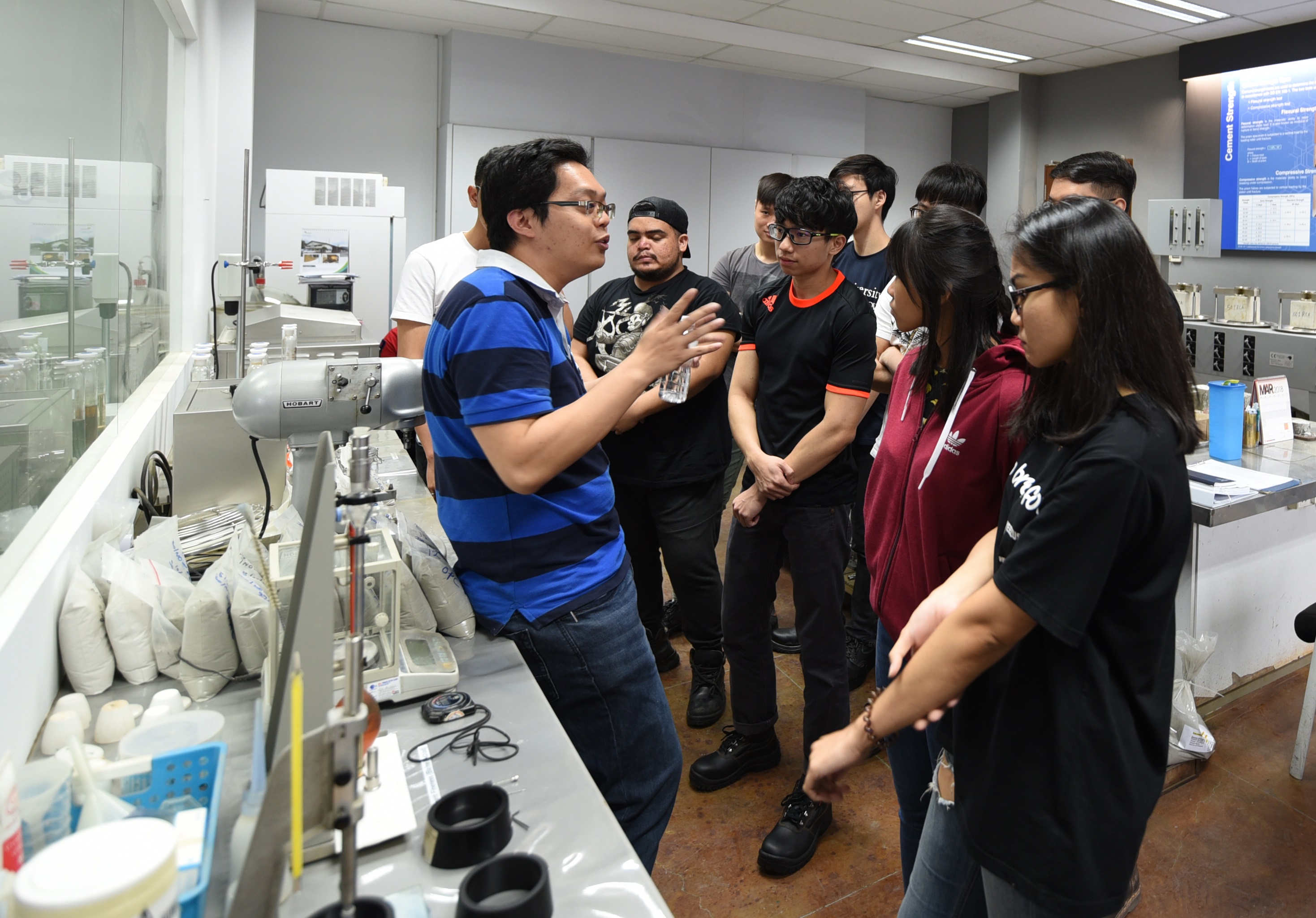
Students gain authentic learning experience and early industrial exposure through i-Labs.
This article was adapted from The Singapore Engineers September 2019 publication with the permission of The Institution of Engineers, Singapore.

